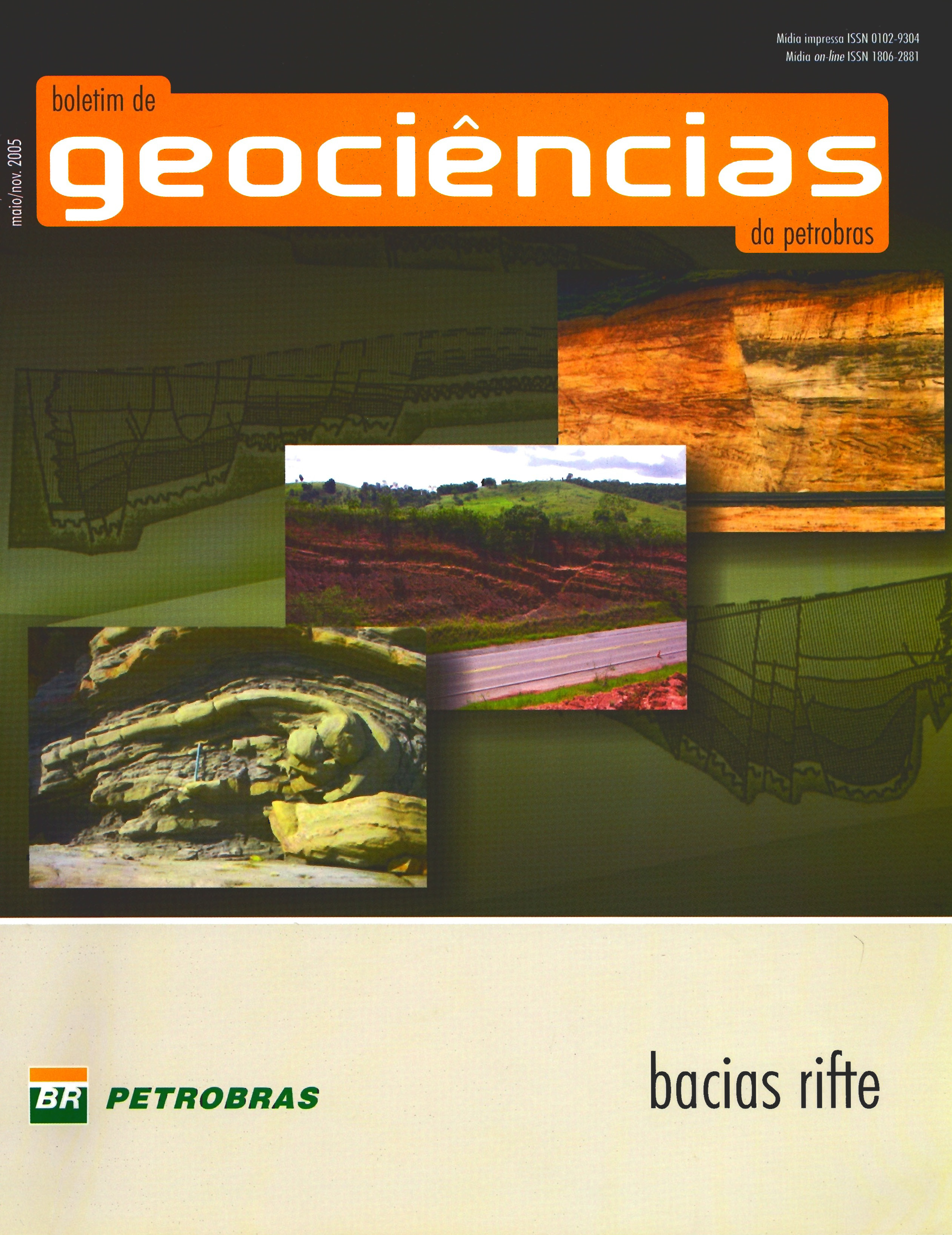Architeture of stratigraphic sequences developed in the deep lake phase of the Recôncavo Rift
Keywords:
continental rift, syntectonic sedimentation, Sequence Stratigraphy, termochronology, rift dynamicsAbstract
The deep lacustrine lithofacies of the Candeias and Salvador formations represent the initial filling of the Recôncavo Basin and are typical lithofacies of a starved basin, where the accommodation space exceeds the sedimentary supply and sedimentation occurs as a catastrophic process related to the lateral propagation of the rift. Furthermore, the depositional framework was controlled by a combination of several hyperpicnal flows towards pelitic depocenters located in deep water areas. The sedimentation path between the source areas - located in the flexural and/or the faulted borders - and the depocenters’ areas was controlled by the bottom topography. On the other hand, the bottom opography is genetically related to basement faults’ activity, which controlled several depositional geometries and their related lithofacies: mounds and lenses of massive sandstones, turbidite lobes and alluvial fans with polimitic orthoconglomerates. The integration of outcrop, well and seismic data allowed a better understanding of the rift stratigraphy and the depositional processes induced by the rift tectonics, as well as, the identification of three different lithofacies. In addition, it was also possible to identify the most favorable sites where three different identified geometries could occur and their related lithofacies, which is significantly interesting to the exploratory activities, mainly in terms of identifying stratigraphic traps in intracontinental rift basins. The history of the basin filling was strongly affected by the activity of the master fault - Salvador Fault System. A second order Deep Lake Tectonosequence was formed as a consequence of the tectonic intensity, which is composed by two different third order tectonosequences named High Lake (HLT) and Low Lake (LLT) and are formed by two system tracts: a lower transgressive and an upper regressive.
Downloads
Published
Issue
Section
License
This license enables reusers to distribute, remix, adapt, and build upon the material in any medium or format, so long as attribution is given to the creator. The license allows for commercial use.



